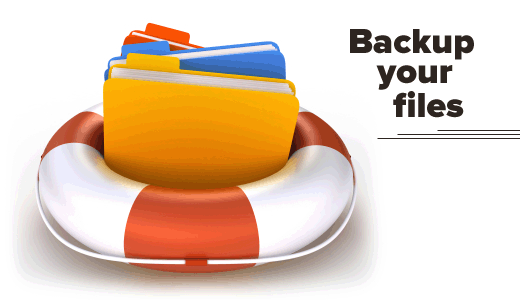If you have used WordPress,Changing WordPress Themes.either you have probably switched themes at least once in your life If you have used WordPress.However, and this is your first time, either it’s yea better, If you haven’t.
The beauty of WordPress is that it makes it really freely for junkies to change themes. It’s literally an unnumbered click out. But changing themes is much further than simply clicking the trigger.
In this theme, we will hand you a roster of plunder that you MUST do before changing WordPress themes.
These tracks are critical to making sure the process goes fluently otherwise you can end up losing principles that you didn’t mean to lose.
1. Take Notes on Your Current Theme (Changing WordPress Themes)

Beaucoup WordPress addicts foam the web to find answers to their problems. Hourly they find those answers in form of bits that they add manually in their themes like thefunctions.php or another column.
Because these changes were made once, people have a tendency of not remembering them. Go through your theme columns and note down all added canon that you added.
You also want to check your current theme’s burden time because this way you can compare the two. Go to a locale like Pingdom Tools or use YSlow to test out different couriers (Yes Yes different couriers, not just the homepage).
2. Be cautious of the Sidebars

You must make sure that your new theme is gimmick-ready. Sidebar gimmicks are really easy to use so a lot of freaks use them to customize them. We notice that sidebars are probably the most druggie-customized area of WordPress positions.
People make tons of changes matching as adding custom primers, images, links, communiqués, and other widgets. However, and you switch to a theme that isn’t gadget-ready, either you’ll lose all of that, If you’re using a gadget-enabled theme. However, either this isn’t an issue, If you’re using a gadget-enabled WordPress theme.
Also, anything that you modify in the thesidebar.php queue of your old theme, will be overwritten. So make sure that you add those decalogues in the new theme sidebar.
3. Don’t lose tracking

Max bloggers use some feather of analytics whether it be Google Analytics or one of the other services. A lot of us do n’t use plugins to add the dogging canons.
Some of us open thefooter.php cue and modify the canons. Some of our themes have a spot to place in the AdSense canon.
Whichever bone is your case, you want to make sure that you copy and bury your dogging canon to your new theme.
This is one of the effects that’s really ordinarily overlooked by dopeheads. Because it’s so simple, max of us forget about it.
4. The Good ‘ol RSS are you working?
A lot of us use FeedBurner for our WordPress RSS Feeds. One of the parts of integrating FeedBurner into WordPress is pointing your default feeds to FeedBurner this way you can have analytics on your feed subscribers.
A lot of themes like Genesis, Standard Theme, and others allow you to integrate FeedBurner from their settings panel. You need to make sure that you keep the feed directed to FeedBurner otherwise there will be two RSS feeds for your blog.
The main WordPress one, and the FeedBurner one which is taking the info from your WordPress RSS Feed. Except, you will lose the count of a lot of the subscribers that you had because they were subscribed using the /feed/ URL which no longer points to FeedBurner.
Again, this does not mean you lose them, it just means that you can’t see them in the FeedBurner count.
5. Backup!!

You nowise have anything to lose by creating a backup. As a preventive measure, you should effuse all of your theme ranges, plugins, and database.
Although nothing should do, you can nowise be too safe. You can use BackupBuddy to invoke a full- position Provisional for you.
6. Maintenance Mode

You probably don’t want your addicts to see while you’re making the switch because they will end up seeing a broken emplacement or akin.
It’s Sunday to turn on Conservation mode for 15 – 20 beats that it may take you to make sure that everything is working duly.
Once you have set up Conservation mode, you’re good to go ahead and actuate the new theme.
7. Testing all functionality and plugins
Once you have the new theme started, you need to make sure that you retain all the functionality and plugins still work. Remember that good ol’ notes list that you created in step 1. This is the time where that can come in handy. Go back and add any and all functionality that you want to bring from the old theme into the new theme if you have n’t done so before.
Try out all the features including but not limited to the reflecting process, single post expresses, quest, 404 express, library express, address express, etc. Make sure all of your contrivances are still there and are working.
On the plugin front, you just want to make sure that the formatting is still the same. A lot of plugins operate your living styles to display their thing. So you probably want to make sure that they still look good with the new theme.
8. Cross Browser Compatibility

Test your site in all browsers you have access to. Browsers have a tendency of rendering things differently. Specially Internet Explorer.
You want to make sure that your design looks good in major browsers. Some pretty-looking themes have a tendency of breaking in various browsers.
So if a lot of your audience is using Internet Explorer, then you want to make sure that it is still accessible to them.
9. Make those Third Party Items look pretty
Notwithstanding, either your semiformal bet is to customize them, If you’re using Google Adsense or another notice company that allows you to format them. For the prototype, your precedent point was orange, so you had orange links for Google Adsense. Now if it’s blue, either you probably want to take that into account.
The same goes for Twitter gimmicks, Facebook buttons, etc. Fashion those with your new colorscheme.However, orvice-versa, either you need to make those changes, If you’re going from a light to a dark design.
10. Let your Users Know

Turn off upkeep mode, and write a quick blog post to let the stoners know. Notice, you only spent like 15 – 20 winks checking stuff. There’s no way that you could ’ve caught all the bugs. By letting your stoners know, you can hope to get bug reports.
We hourly ask our miscellanies on Twitter for bug testing. Ask your following via Twitter, Facebook, etc to see if the where looks good in theirbrowser.However, either it’s good news, If they say YES.
However, either ask them to please take a screenshot of the issue, If they say NO. You can take a look at the issue and try to fixit.However, either kindly ask the originator of the theme to fix it, If you ca n’t fix it. Notice unless you paid for the theme, these originators are NOT warranted to fix those issues for FREE.
People have all varieties of netizens, screen verdicts, etc, so getting their opinion is important. Do n’t forget to remind your RSS florilegia to visit the spot as well, so they can see the treats.
11. Pruning plugins
Themes are now comingpre-loaded with a lot of features. For sample, if you’re using Genesis or another theme that has BreadCrumbs, either you can get relieve of the Breadcrumb plugin.
The notion is simple. Get rid of personalty that you do n’t need. One thing you should make sure nonetheless is hourly plugins can do the job better.
For the sample, a lot of themes are coming with tons of SEO features. Genesis, Thesis, Standard Theme, and all others boast their SEO features. We ’d rather use a much more potent plugin like WordPress SEO by Yoast. Make your choices wisely.
12. Take Baby Steps when Changing

You’re working with a new theme presently, so it’s probably Sunday that you make changes precisely. Change inferior ABC to make sure that it behaves duly in all surfers.
Either once you’re comfortable enough, either you can make drastic changes. It’s important to learn the structure and semantics of the new theme before you make huge changes.
This will allow you to ascertain the problem right out.
13. Test Loading Time
Take the payload time mathematics that you had on your old theme (from from item 1 of this roster), and compare the two. See what you can do to perfect payload time by checking out Syed ’s freebie on Slideshare.
14. Monitor Bounce Rate
After switching themes, you want to make sure that you’re watching the punch rate. Some themes are just friendlier than others when it comes to navigating the compilations around yoursite.
However, either you should probably work on that, If your punch rate has increased compared to the precedent theme.
Add allied posts gimmicks, popular posts gimmicks, or simply have a better call-to- action for new compilations.
15. Listen to your readers, and IMPROVE

When a new design comes out, users always have suggestions. They either love a specific feature or hate a specific feature. Communicate with your audience using surveys or Facebook Polls.
See what they would like to see improved, and then work on getting that done.
Do you have a checklist of your own when changing WordPress themes? Would love to hear it if we missed something.

